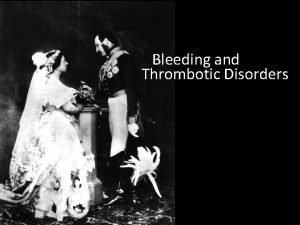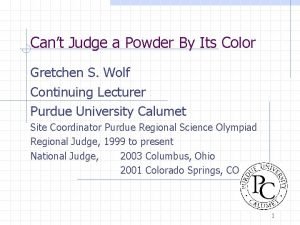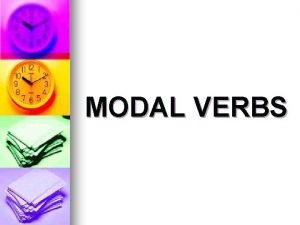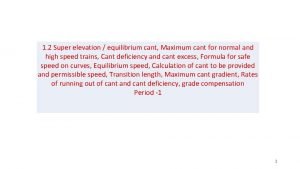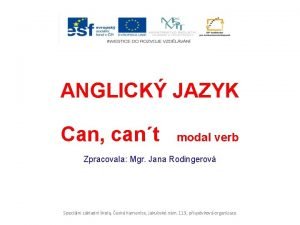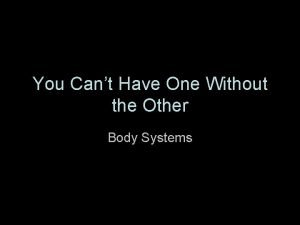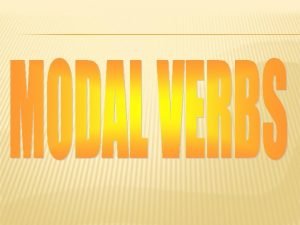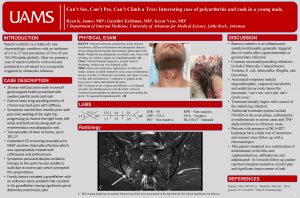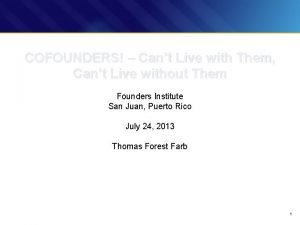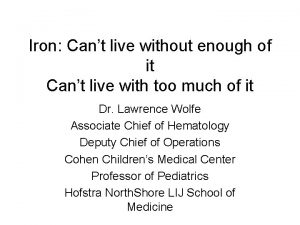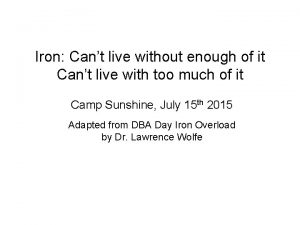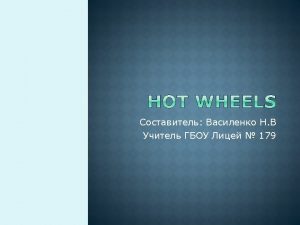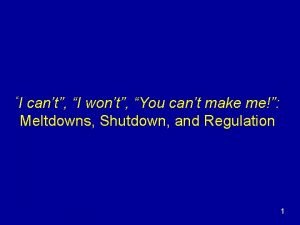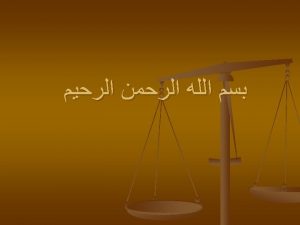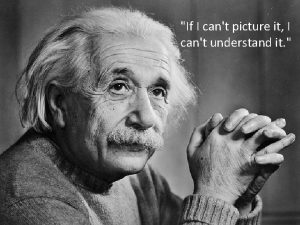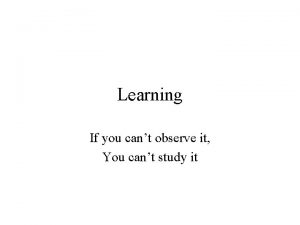How to See What We Cant See First




















- Slides: 20

How to See What We Can't See

First, some electronics resistor LED capacitor

Voltage (V) Electric potential energy per unit charge Measured in volts Volt = 1 Joule per coulomb 0 is arbitrary Always relative, usually to “ground” Common voltages AA battery – 1. 5 V (DC) Car battery – 12 V (DC) Outlet – 110 V (AC) Electron volt – energy to move 1 electron across 1 Volt

Current (I) Flow of electric charge (often electrons) Potential difference (V) will cause charge to flow Measured in Ampere – one coulomb per second Conventional electric current flows in the direction of positive charge Heat loss in conductor proportional to I 2 War of the Currents

Power Rate of energy Measured in Watts – 1 Joule per second Convention power consumed by device + power produced by device Revisit “War of Currents” AC – voltage can be increased with transformers For constant power, V I 2 Heat loss as I AC has less energy loss along power lines over long distances Voltage is ? Current is ? Power is? Energy per charge Charge per second P = IV

Resistance Electrical “friction” Measured in Ohms Ohm's Law V = IR Conductors, such as most metals, have high conductivity and low resistance Superconductors have zero resistance

Resistors The colors are sorted by energy: red (2), orange (3), yellow (4), green (5), blue (6), violet (7) Black (0) has no energy, brown (1) has a little more White (9) has everything and grey (8) is like white, but less intense Value = AB x 10 C +/- D 2, 700, 000 → 2. 7 MW Bad beer rots our young guts but vodka goes well – get some now Black, brown, red, orange, yellow, green, blue, violet, grey, white –gold, silver, none

Capacitance Ability to store charge Property of material and its geometry Measured in Farads → Coulomb/Volt

Capacitors Take time to charge and discharge May be polarized

Transistors Semiconductor device Switch Amplify signal

Diodes Only allows current to flow in one direction Can be light emitting or photodiode

How to detect radiation? 5 Senses. . . Need help One way: Cloud chamber Radiation ionizes super-cooled alcohol vapor Free electrons act as condensation centers Tracks emerge Long skinny – electrons Short fat - alphas

Let's use what we know Ways to measure Radiation: Ionizes Sometimes charged particles Can be neutral Energetic Collect ion pairs Measure electron-hole pairs Find materials that interact with charge – gas, liquid, solid, plasma? Use magnetic fields “Stop” radiation in a material

Gas Detectors Ion Chambers, Proportional Counters, GM Tubes Low pressure gas in a vessel with a cathode and anode Radiation ionizes gas Ions travel towards cathode Electrons travel towards anode IC no avalanche PC discrete avalanches GM Townsend avalanches http: //www. physics. isu. edu/radinf/dectector 1. htm

Which Gas Detector? High rates over extended times? Need energy or particle type information? Ion Chamber Proportional Counter Just want to know if radiation is present? Geiger Counter wikipedia

Time Projection Chambers

Photoelectric Effect Independent of intensity Light is a particle! c=lf -> f=c/l & E = hf = hc/l E (J) = (6. 626 x 10 -34 Js)*(3 x 108 m/s)/400 x 10 -9 m = tiny #/1. 6 x 10 -19 J/e. V = 3. 1 e. V E (e. V) = 1240/l (nm) 3. 1 - 2 = 1/2 mv 2 1. 1*2/m = v 2 , m=0. 511 Me. V/c 2 Planck’s constant was derived from experimental data!

How do we use this? We can measure current – moving charge Photoelectric materials emit electrons when they absorb photons How to turn radiation into light? m Need a material that transforms the energy of a particle into photons ? photocathode e Boost signal?

Let there be light! Scintillate (latin for spark) Can measure: Time of impact Energy of particle

Summary Voltage is energy per charge Current is rate of charge Ohm's Law V=IR Capacitors store charge Diodes only allow current to flow in one direction Anodes and cathodes can collect parts of ionized gas Light can cause metal to emit electrons Charged particles can cause crystals to emit light
 If you cant measure it you can't improve it
If you cant measure it you can't improve it You cant manage what you cant measure
You cant manage what you cant measure Why cant we see atoms
Why cant we see atoms Why we cant see air
Why we cant see air Virchow pentad
Virchow pentad You cant manage what you dont measure
You cant manage what you dont measure O doamne mare cand privesc eu lumea
O doamne mare cand privesc eu lumea Parapet roof framing
Parapet roof framing Cant judge a powder
Cant judge a powder I cant count
I cant count Rail cant
Rail cant Eric ribbens
Eric ribbens Shawn der kinderen
Shawn der kinderen Cant n
Cant n Cant deficiency formula
Cant deficiency formula Verb x
Verb x You can't have one without the other
You can't have one without the other Go noodle cant stop the feeling
Go noodle cant stop the feeling If you cant beat them join them
If you cant beat them join them He can speak
He can speak I bet you cant
I bet you cant




